VOL.193 JUNE 2024
SUMMER FUN IN JAPAN: SEASIDE FESTIVALS AND EVENTS
[Treasures of Japanese Culture] What the Kimono and Japanese Accessories Mean to Me
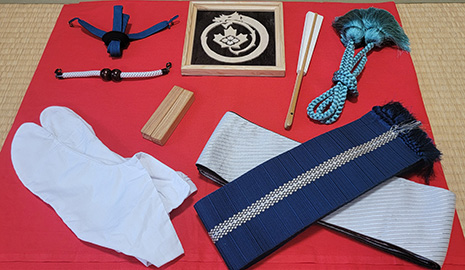
Photo: Katsura Fukuryu Office
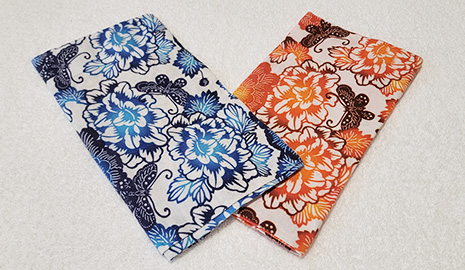
Photo: Katsura Fukuryu Office
KATSURA Fukuryu is a Rakugo storyteller originally from Canada who has lived in Japan for over 20 years now. Onstage in Yose Rakugo theaters, he plays the parts of a variety of characters in the traditional storytelling form, wearing a kimono and using accessories and props including sensu folding fans and tenugui hand towels. We asked him to share his thoughts on the special appeal of the kimono, Japanese accessories, and more, drawing on his extensive knowledge of traditional Japanese culture.
For Rakugo storytellers, the kimono is an important as part of the professional costume. When you become an apprentice to a professional Rakugo storyteller, you are first given thorough instruction by senior apprentices on how to properly wear and handle a kimono. This is not just about how to wear one yourself. It is also your job as an apprentice in training to fold the master’s valuable kimonos. If you make even the slightest mistake in how you handle them, they will get very upset with you, so I did feel nervous at first.
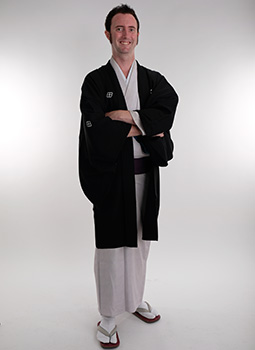
Photo: Katsura Fukuryu Office
Kimonos feature a wide range of designs and materials. Part of their appeal is the way you can enjoy coordinating them with obi kimono belts. For me, I like pairing a kimono with a hat in different ways to take advantage of the fashion possibilities. Mixing Japanese and Western elements together can be fun.
For a lot of people from other countries, however, I think it can be challenging to learn to wear a kimono properly. With that in mind, I recommend the yukata for those who might be interested in a more approachable taste of Japanese culture. The yukata is a type of cotton kimono worn in the summertime, after bathing, and times like that. You might have seen one when staying at a ryokan inn. As light and simple to wear as they are, I think they would be perfect as gifts and souvenirs from Japan. When you wear a yukata, I definitely recommend wearing tabi — traditional Japanese socks with split toes — rather than ordinary socks. While socks can have a feeling of tightness when you kneel on the floor seiza style, tabi are more comfortable, without that feeling of pressure.
A Japanese accessory I find particularly interesting is the tenugui, a long towel-like cloth made of cotton that is often used as a prop in Rakugo. Rakugo storytellers might treat them as letters or wallets in performances. In day-to-day life, they can be used for wiping one’s hands, drying sweat, wrapping other accessories, and so on. Appealing aspects of tenugui include their practicality, of course, but also their colorful and varied designs. The way they not only give a sense of Japanese tradition, but can also be enjoyed for their artistic value, I feel like they would also be appreciated as souvenirs from Japan. I particularly love to use tenugui with tropical, southern island designs. Being born and raised in such a cold location as Winnipeg, Canada, the cultures of warm places like Okinawa tend to attract me.
For the same reason, I also really like kariyushi wear, which has come to be widespread as formal summer attire in Okinawa during the summer. You might think of it as the Okinawan version of the Hawaiian aloha shirt. The shirts have a relaxing feeling, and they feature such a diverse range of designs. I have been collecting them ever since I came to Japan. They are easy to incorporate into daily use, too. I really recommend them!
While we are on the theme of Japanese accessories, I would like to finish up by touching on some small furniture items we use in Rakugo. In Kamigata Rakugo, a form of the performing art rooted in the Kansai region1, there are a couple of small furniture items that Rakugo storytellers are responsible for providing on their own. One is a small desk called a kendai, and another is a board that hides the performer’s knees from view, called a hiza-kakushi. While I had the ones I use specially made in foldable forms inexpensively, I learned recently that it can be quite expensive to have them made by craftsmen ordinarily. These are such valuable items, I plan to keep using them with great care for years to come.
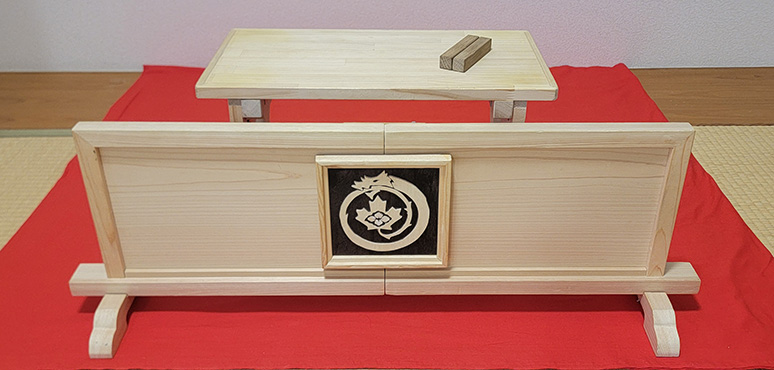
The kendai (small desk) and hiza-kakushi (knee-concealing board) KATSURA Fukuryu uses in his Rakugo performances. The pieces’ rare folding forms reveal the aesthetic sensibilities of Japanese craftsmen in the details of their constructions.
Photo: Katsura Fukuryu Office
Japanese accessories are full of associations with Japanese traditions. I think you can really appreciate their appealing aspects more deeply if you learn about their significance and the history behind them.
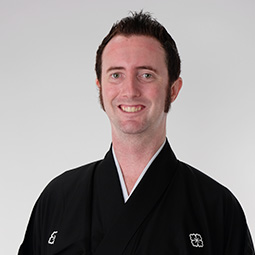
KATSURA Fukuryu
He is a Rakugo* storyteller originally from Canada. In October 2016, he joined the KATSURA Fukudanji Ichimon (House), and became the 11th disciple of KATSURA Fukudanji. He is based in the Kansai region**, and performs at Yose (Rakugo theaters) throughout Japan. With the goal of showing the charm of Rakugo to the world, he has appeared in shows in Las Vegas, San Francisco, and Hawaii in the United States, as well as in Canada and the Philippines.![]()
* The traditional Japanese storytelling art of Rakugo originated more than 400 years ago. For more information, please see this article in the May 2024 issue of "HIGHLIGHTING Japan."
** Kansai region: The area roughly around Kyoto, Osaka, Kobe, and their neighboring prefectures
by KATSURA Fukuryu
Photo: Katsura Fukuryu Office

